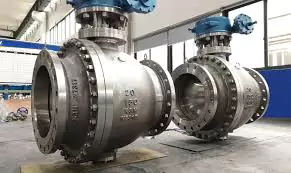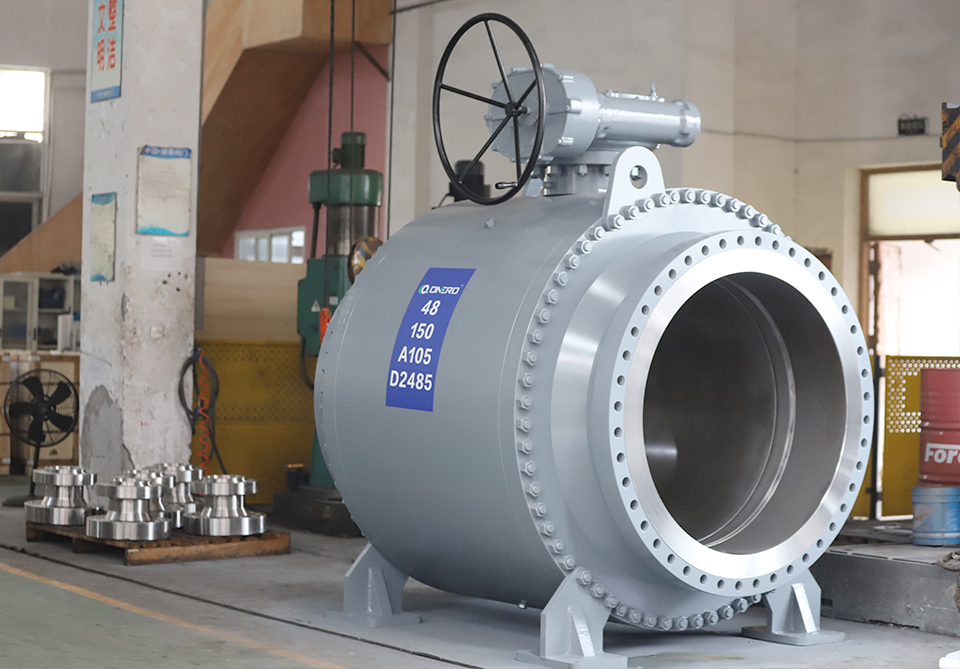Ball valves are one of the most frequently encountered valve types globally. They are appropriate for various uses, including home plumbing and heavy-duty industrial usage. Ball valves are superior to other valves in several ways, such as their more comfortable operation, tighter sealing, and more compact construction. Each kind has certain advantages and qualities of its own. What distinguishes these two varieties of valves from one another, though? Here, we will contrast trunnion-mounted ball valves vs. floating ball valves.
Differences Between Trunnion and Floating Ball Valve
A ball attached to a trunnion at the bottom along attached to an extension at the top constitute the constituent components of a trunnion ball valve. Thornion-mounted ball valves or completely welded trunnion ball valves are other names for this type of valve since both parts are welded together. Because the ball is affixed, there is less friction and medium pressure force, so operating this valve takes less torque.
Conversely, a floating ball valve features a ball attached to a stem at the top after being allowed to float freely at the bottom. Rather than being placed on a trunnion, it is kept in place by fluid pressure and seat rings. It needs a lot of torque to run. Still, it’s a dependable bi-directional shut-off valve.
What are Floating Ball Valves’ and Trunnion Ball Valves’ Common Uses?
Trunnion ball valves are used in demanding industrial applications such as oil and gas pipelines, power plants, chemical plants, and hydrocarbon processing facilities.
These valves, designed for high-pressure and high-temperature applications, perform well in larger-diameter pipes requiring precision flow control.
Their adaptability applies to various sectors, such as hydrocarbon processing, chemical, oil and gas, and power production.
By contrast, floating ball valves get used in many additional applications, such as pipelines, water treatment, and chemical processing.
They work effectively with smaller-diameter pipes because of their affordability and ease of operation and maintenance.
Additionally, floating ball valves might get used in the oil and gas sector in circumstances where it’s essential to transfer large liquids with little resistance to flow.
How do you choose the proper Trunnion and Floating Ball Valves?
When choosing between floating ball and trunnion valves, it’s critical to consider the specific needs of your industrial application.
Consider the following crucial points.
Trunnion Ball Valves
- Excellent for high-pressure applications and bigger-diameter pipes.
- Particularly efficient in situations with high temperatures and pressures.
- Excellent fit for automated actuators and automation.
- Consistently and flexibly responds to a wide range of circumstances.
Floating Ball Valves
- Appropriate for pipelines with a lower diameter and is often more economical.
- More-straightforward to use and maintain.
- Suitable for many applications, including chemical processing and water treatment.
- Perfect for large fluid transportation systems and pipelines with low flow resistance.
Conclusion
Trunnion ball valves differ from floating ball valves in a few significant ways. For high-pressure applications, a trunnion ball valve is a more desirable solution owing to its more accurate effective pressure rating. Floating ball valves are a preferable opportunity for applications where leaks are an issue because of their lower likelihood of leaking. There are benefits and drawbacks to types of valves, so it’s critical to choose the proper industrial valve manufacturer for the job.

-.jpg)

